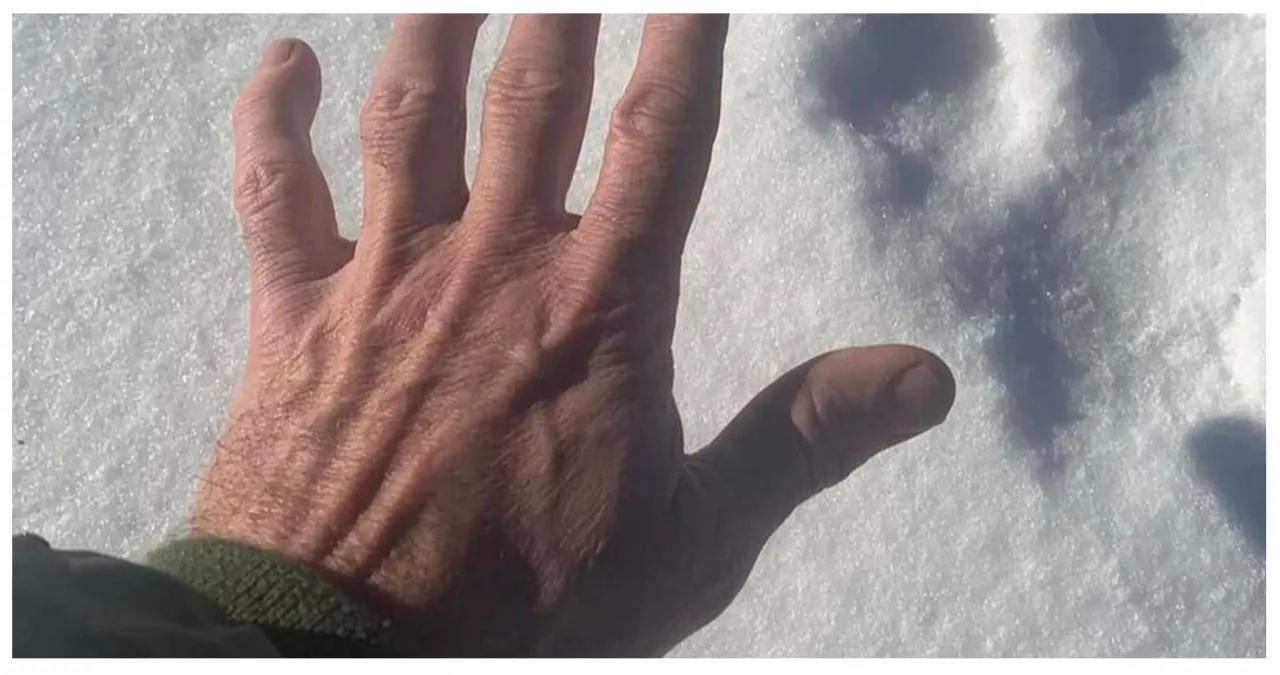A rare snowfall in Alabama brought approximately 4 inches of snow to north Alabama, prompting many people to venture outdoors and appreciate its beauty. The pristine blanket of snow revealed animal tracks that would typically go unnoticed. Among these tracks were a peculiar set that resembled cloven hoofprints, initially resembling ordinary deer tracks. However, what made them extraordinary was their sudden appearance in the middle of an open field, followed by a complete disappearance after a few steps. The landowner who captured the photos described it as if the entity responsible had simply landed, walked a few steps, and then vanished. This begs the question: What could have caused these enigmatic prints in the snow?
When I first learned about the tracks, they immediately reminded me of the infamous “Devil’s Footprints” in England – a mystery that still baffles people today. Back in 1855, near Devon, England, residents woke up to a peculiar sight after a snowfall overnight. There, stretching for what seemed like hundreds of miles, were enigmatic cloven hoofprints. These tracks became famously known as the “Devil’s Footprints.” Blogger David Castleton delved deep into the story of the “Devil’s Footprints” in his blog, where he described the inexplicable phenomenon discovered in the snow-covered Devon landscape.
On the night of 8th-9th February 1855, a long and meandering trail of mysterious marks was left in the snow across the English county of Devon. The marks resembled hoofprints, somewhat similar to a donkey’s. The intriguing – and disturbing – thing, however, was that the hoofmarks didn’t look like they’d been made by a four-footed animal. The marks mostly appeared in single file, as if some two-legged, upright creature had hopped or jumped. Occasionally, the tracks were double, suggesting the strange biped had ‘merely’ been walking. It didn’t take the local country people long to determine which entity was responsible for the hoofprints. They’d only heard of one creature that had hooves but walked upright like a man. The marks in the snow were soon named ‘the Devil’s Footprints’. And, it would turn, out the Fiend hadn’t finished with Devon – he left more marks, though not in such large numbers, over the following days.
While I personally don’t consider the tracks in north Alabama to be the “devil’s footprints,” I had the opportunity to speak with the property owner where these tracks were found. Interestingly, the tracks in Alabama share a similar air of mystery to those discovered in England. Notably, the tracks are quite large, as evident in the photo below, where they are compared to the hand of the landowner.
On a secluded property in Lauderdale County, a set of tracks mysteriously appeared. The owner of the property, who prefers to remain anonymous, stumbled upon these tracks and managed to capture two photographs. Curious about their origin, I asked the owner what made these prints so peculiar.
“Those tracks were one single track that just started and ended like something landed, walked a little and flew off. I’m starting to believe it was the great blue heron that hangs out at my pond or a demon from hell. Lol”
Of course, he was joking about the tracks being made by a demon. We initially thought it could be the result of a great blue heron, but after researching online and examining the photo below of great blue heron tracks in the snow, it became clear that they were completely different from the tracks found on his property.
The tracks had an unusual feature: they were arranged in a single row. It almost looked like a one-legged deer named Pogo was hopping along in the snow. Typically, deer tracks appear in two rows, as shown in the graphic below from Exploring Nature: Science Education Resource. They are usually slightly offset, rather than forming a straight line.
Although the tracks in north Alabama resemble those made by deer, they could have actually been created by a different animal entirely. When the tracks were shared on social media by the property owner, some people speculated that they might be the work of a chipmunk or a bird. This theory holds some weight, considering the tracks abruptly ended after a few yards, suggesting that the animal may have taken flight. The indentation left by the bird’s feet and body in the snow merely resembled deer tracks. Additionally, the shape of the tracks could have been distorted as the snow melted. So far, the most plausible explanation is that a small bird made the tracks.
The unusual tracks, along with the rare snowfall in north Alabama, have long disappeared. We can only speculate about the creature responsible for the tracks, why they seemed to follow a straight line, and why they abruptly ended as if the animal had flown away. Were the tracks that resembled cloven hoofprints actually made by deer, or could they have been left by a bird? Perhaps there’s an even more mysterious explanation. We’d love to hear your thoughts in the comments!
Read More:
- woman who survived the semi-crash gives credit to her seatbelt for saving her life
- Investigation underway regarding Patrick Mahomes situation in the NFL

